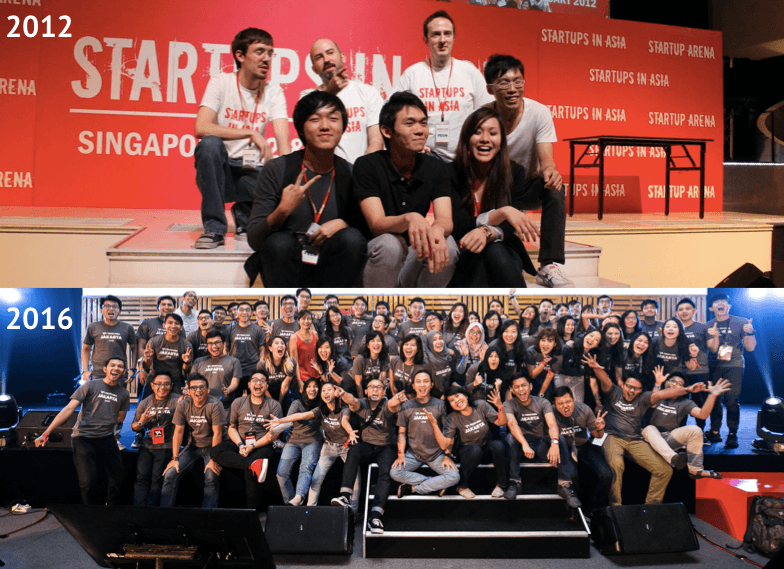
Tech in Asia then and now.
Willis Wee, founder and CEO of Tech in Asia (then Penn Olson), secured his first investment in 2011 without a business plan. Still a college student and new to the startup world, he nonetheless came up with one in three hours.
It was raw, but convincing enough.
View and download this document on Slideshare. Here’s the spreadsheet of the financial projections.
By 2012, Willis had built a core team of 11, and tripled the site’s monthly pageviews. To grow further, he had to raise another round of funding.
This time around, his slide deck wouldn’t look out of place in today’s startup world.
View and download this document on Slideshare.
Glimpse of the future
Investor pitch decks are about promoting not just the company’s current strengths, but also what it can become. They sell the beautiful story of the constant upward climb into rapid user growth and abundant moolah.
Real life is far more complicated though, and you can see this when you compare where Tech in Asia is today with what was pitched in those presentations.
Many of our plans died. Our expansion into China failed as we couldn’t find product-market fit.
We tried building a wiki of startups and investors, but were let down by an outsourcing firm we engaged. Willis eventually ditched the idea as he felt building a product wasn’t his cup of tea.
The lack of a startup database also meant that the idea for a jobs board couldn’t take off.
A lot of people complained that the ads were very annoying. So we decided not to do it.
Another idea that was pitched in both presentations was that we’d monetize through advertising. Willis pulled the plug even though he was seeing much-needed revenue from it. He made S$3,000 (US$2,100) a month from advertising before any external funding came in.
“I didn’t know how to build products but I cared about our users. A lot of people complained that the ads were very annoying. So we decided not to do it,” he says.
A big regret that Willis has – and perhaps his biggest mistake so far – was not investing in product and engineering fast enough.
“We became more product- and engineering-focused only much later,” he adds.
What went right
It’s still heartening to see, though, how many of the ideas pitched since 2011 have come to life today.
Our conferences now span four countries. We have a solid product and engineering team. We finally have a database of startups and investors, as well as a jobs board.
We’ve found an advertising model in branded content that promises a superior user experience over banner ads.
Against this backdrop, it’s amusing to see Willis get embarrassed over the mistakes in the first business plan as we look at it together.
What he isn’t embarrassed about, however, is what Tech in Asia has achieved.
“I feel happy I surpassed these numbers,” he says. “Whatever I promised investors, they tended to be close to what I achieved in the end.”
Got a cool slide deck you want to share? Send them to editors@techinasia.com! We’re looking for investor pitch decks, as well as any insightful presentations on any tech-related topics you may have given recently. We’ll promote the best ones with the Tech in Asia community!
This post Revealed: Tech in Asia’s early investor pitch decks – and its biggest mistake appeared first on Tech in Asia.
from Tech in Asia https://www.techinasia.com/revealed-tech-asias-early-investor-pitch-decks-biggest-mistake
via IFTTT
No comments:
Post a Comment